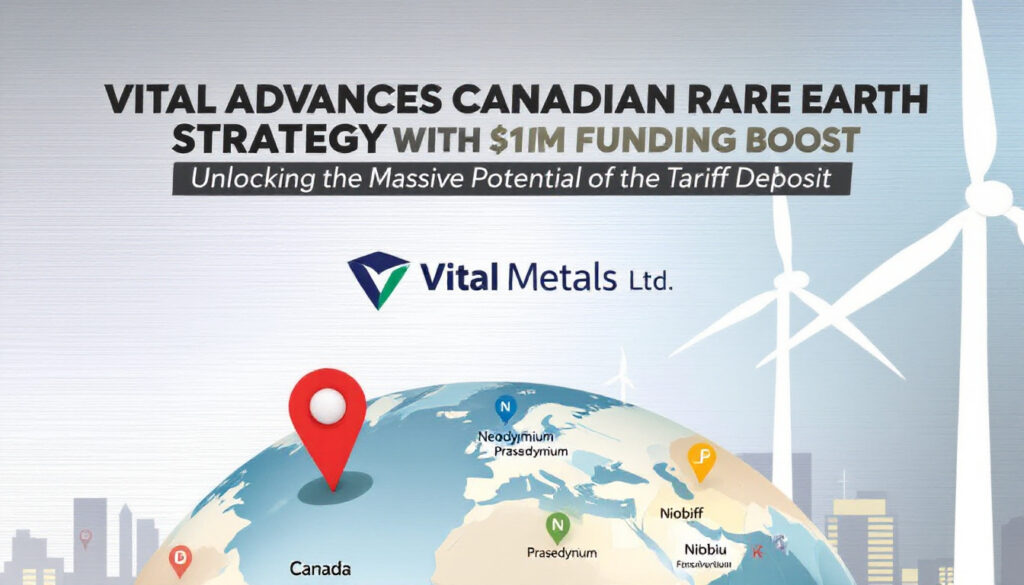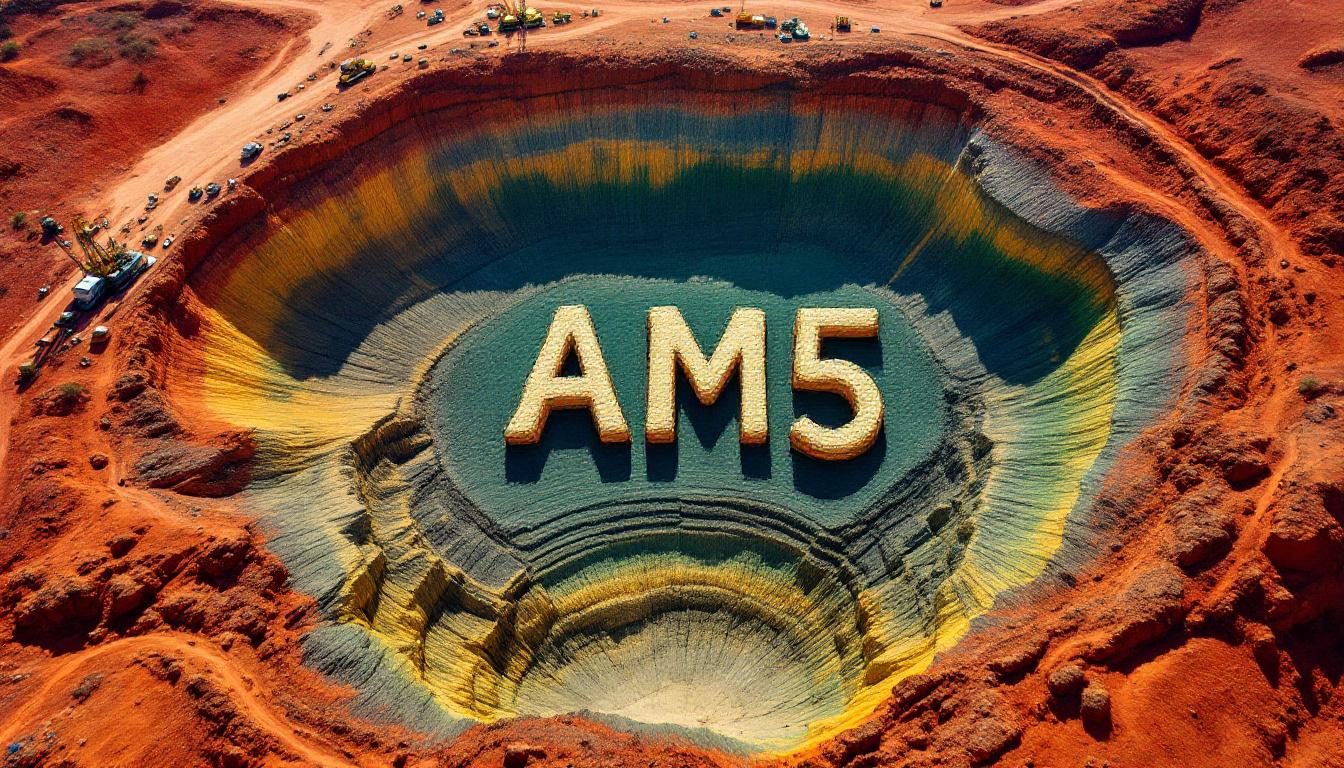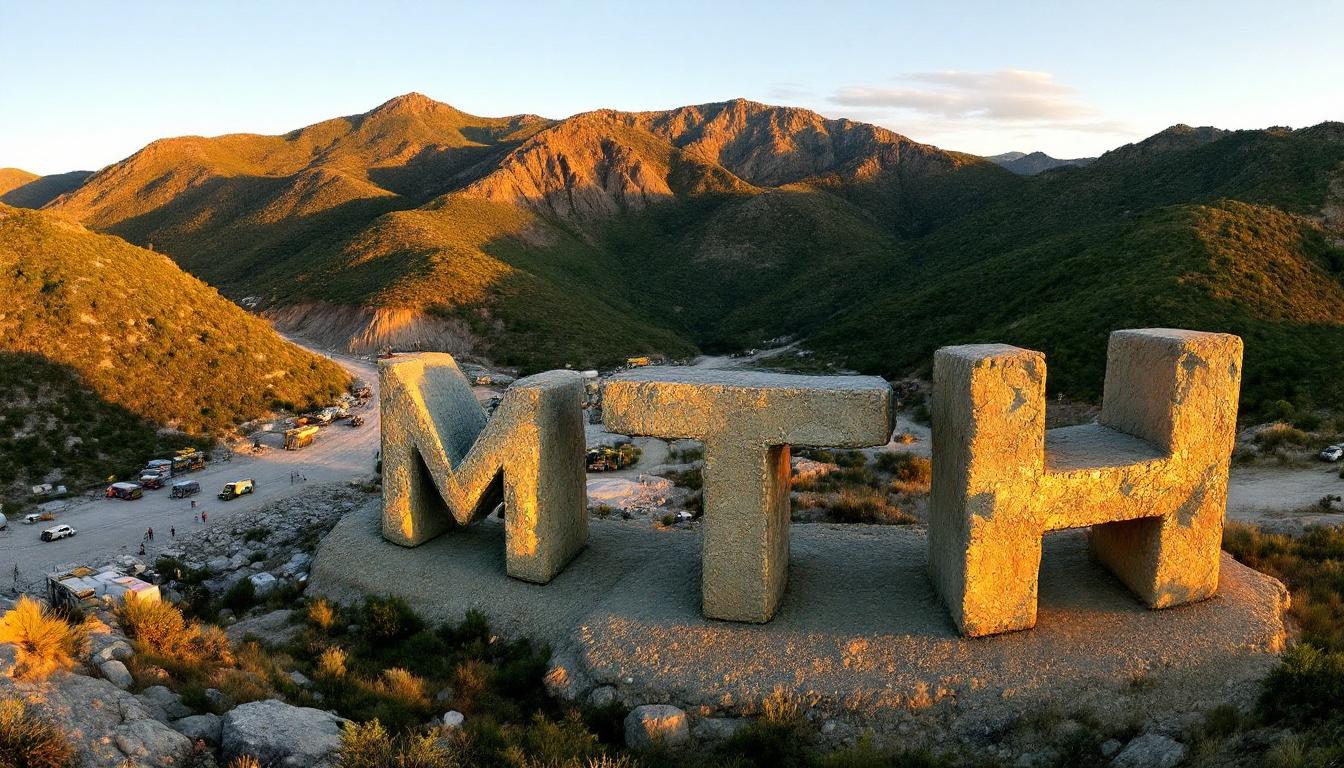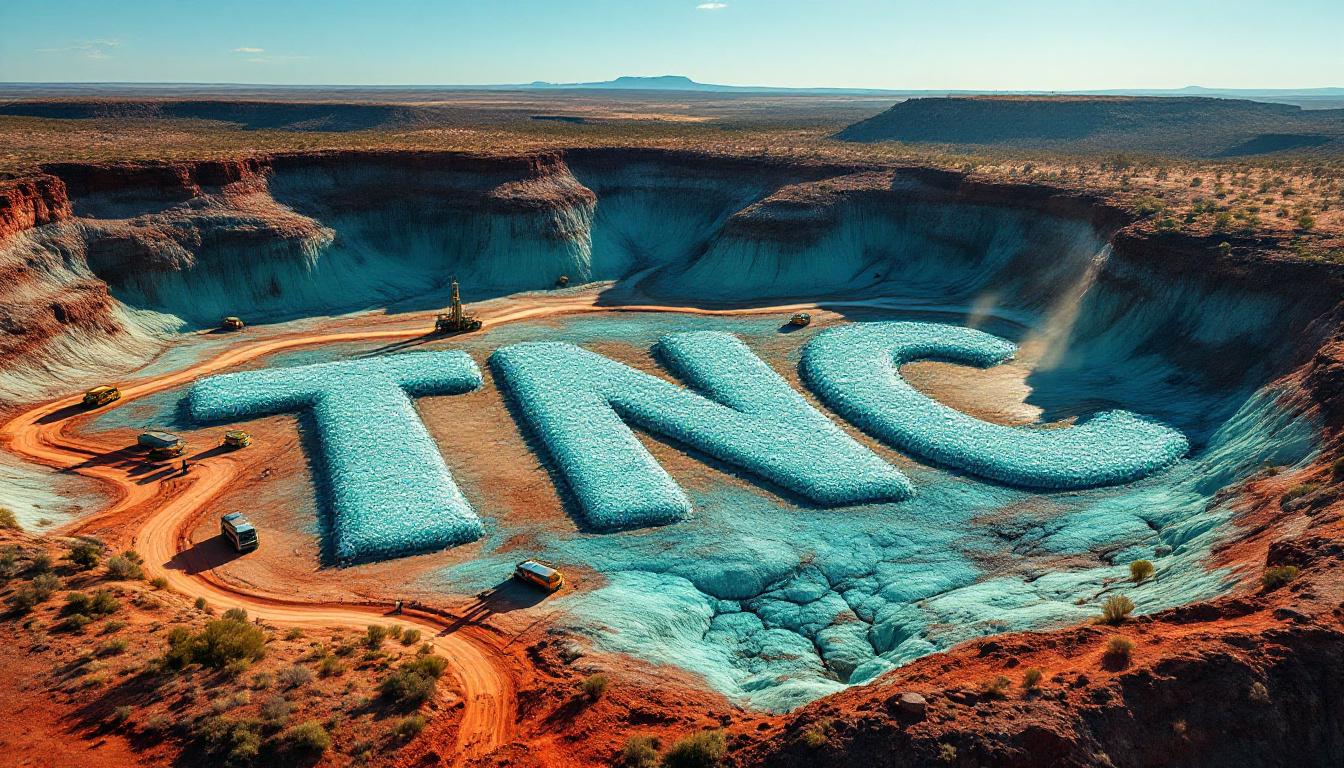Vital Advances Canadian Rare Earth Strategy with $1M Funding Boost
Vital Metals has secured a $1 million convertible loan while finalising its Tardiff Scoping Study and forming a strategic Canadian rare earths consortium. The company is positioning itself as a key player in developing North America’s critical minerals supply chain, with significant progress expected in the coming months.
The funding from Asia Pacific Holdings Limited, a current shareholder, demonstrates investor confidence in Vital’s strategy as it completes crucial development work on its Tardiff deposit. This financing provides necessary working capital as the company pursues additional non-dilutive funding options.
Unlocking the Massive Potential of the Tardiff Deposit
The Tardiff deposit is shaping up as a globally significant resource with 192.7 million tonnes at 1.3% total rare earth oxide (TREO) and 0.3% niobium. This resource contains an impressive 636,000 tonnes of NdPr (neodymium oxide + praseodymium oxide) and 578,000 tonnes of Nb2O5.
The ongoing Scoping Study, expected to be completed by late April 2025, is examining:
-
- Potential scale and size of rare earths recovery
-
- Niobium recovery opportunities
-
- Processing options and economic parameters
-
- Development pathways for this substantial deposit
This detailed assessment includes additional niobium testwork to evaluate recovery of this valuable critical mineral alongside rare earths, potentially enhancing project economics.
Key Terms of the Strategic Funding Package
The $1 million convertible loan includes the following terms:
| Term | Details |
|---|---|
| Lender | Asia Pacific Holdings Limited (existing shareholder) |
| Maturity | 12 months |
| Interest Rate | 12% per annum, paid in arrears |
| Conversion Price | $0.002 per share |
| Options | 280 million options with 18-month expiry at $0.004 strike price |
| Security | Nil (unless company enters another loan) |
The funding will support general working capital needs while the company finalises its Tardiff Scoping Study and advances discussions with government partners.
Understanding Rare Earth Elements: Critical Components in Modern Technology
Rare earth elements (REEs) comprise a group of 17 metallic elements that play a crucial role in numerous high-technology applications. Despite their name, most REEs are relatively abundant in the Earth’s crust but seldom occur in concentrated forms that make extraction economically viable.
The 17 elements include the 15 lanthanides (lanthanum to lutetium) plus scandium and yttrium. They are typically categorised into two groups:
-
- Light Rare Earth Elements (LREEs): Including lanthanum, cerium, praseodymium, neodymium, promethium, and samarium
-
- Heavy Rare Earth Elements (HREEs): Including europium, gadolinium, terbium, dysprosium, holmium, erbium, thulium, ytterbium, lutetium, scandium, and yttrium
REEs possess unique magnetic, luminescent, and electrochemical properties that make them indispensable in many modern applications:
-
- Magnets: Neodymium-iron-boron (NdFeB) magnets are the strongest permanent magnets available and are essential in electric vehicle motors, wind turbines, and electronic devices
-
- Catalysts: Used in catalytic converters and petroleum refining
-
- Phosphors: Enable colours in digital displays, LED lighting, and lasers
-
- Glass and ceramics: Added for polishing, colouring, and UV resistance
-
- Defence technologies: Critical components in missile guidance systems, radar, and other military equipment
-
- Medical applications: Used in MRI contrast agents and certain cancer treatments
Neodymium (Nd) and praseodymium (Pr) are particularly valuable as they form the basis for NdFeB permanent magnets. As the world transitions toward renewable energy and electric mobility, demand for these elements is projected to increase substantially, with forecasts suggesting a potential tripling of consumption by 2035.
Niobium, while not classified as a rare earth element, is often found in association with REE deposits. It is primarily used in the production of high-strength, low-alloy (HSLA) steels for automotive, structural, and pipeline applications. The addition of just 0.1% niobium can increase steel strength by up to 30%, making it a highly valuable element for advanced manufacturing and infrastructure projects.
Canadian Strategic REE Consortium: A Game-Changing Alliance
In a significant development, Vital has joined forces with other key players to form the Canadian Strategic REE Consortium, including:
-
- Appia Rare Earths & Uranium Corp.
-
- Commerce Resources
-
- Defense Metals
-
- March Consulting Associates Inc.
-
- Corem (mineral processing innovation centre)
This collaboration aims to:
-
- Accelerate the establishment of a national rare earth elements industry
-
- Reinforce Canada’s strategic role in critical minerals
-
- Optimise extraction and processing through technological innovation
-
- Pool resources and expertise across the value chain
-
- Support socio-economic development in northern communities
The consortium represents a coordinated approach to developing Canadian rare earth resources, potentially transforming how these critical minerals are produced in North America.
Upcoming Catalysts: What Investors Should Watch
Several near-term catalysts could drive Vital’s development:
-
- Tardiff Scoping Study results – Expected in late April 2025
-
- Canadian government discussions – Updates anticipated in coming months
-
- Potential non-dilutive funding – Company actively pursuing options
-
- Consortium developments – Progress on collaborative initiatives
-
- Niobium testwork results – Additional data on recovery potential
These milestones will provide greater clarity on Vital’s development pathway and the economic potential of its flagship Tardiff deposit.
The Investment Case for Vital Metals
Vital Metals presents an interesting investment proposition based on several key factors:
-
- Resource Scale: The massive 192.7Mt Tardiff deposit positions Vital as a potential major player in the rare earths space
-
- Strategic Location: Canadian jurisdiction offers geopolitical advantages for Western supply chains
-
- Dual Commodity Opportunity: Both rare earths and niobium provide diversification and enhanced economic potential
-
- Government Support Potential: The Canadian government has shown commitment to developing domestic critical minerals supply
-
- Consortium Leverage: The newly formed consortium may accelerate development timelines and optimise processing solutions
The growing lithium market surplus insights and future trends demonstrate why diversification into other critical minerals like rare earths is a strategic move for both companies and investors. As demand for EVs continues to rise, rare earths will remain essential components in motor manufacturing.
Why Investors Should Follow Vital Metals
Vital Metals offers exposure to the growing critical minerals sector with significant potential for value creation through several pathways:
-
- Resource Scale: With 636,000 tonnes of NdPr and 578,000 tonnes of niobium at Tardiff, Vital controls a globally significant resource
-
- Clean Energy Transition: Rare earths are essential to the electrification of transport and renewable energy
-
- Supply Chain Security: Western nations are actively seeking non-Chinese rare earth supplies
-
- Consortium Advantage: The newly formed Canadian Strategic REE Consortium enhances development potential
-
- Near-term Catalysts: Multiple upcoming milestones could drive re-rating opportunities
Monitoring subsequent cycles in junior mining provides historical insights that can be valuable when evaluating companies like Vital Metals. With significant development at North Stanmore and other innovative mining opportunities emerging across the sector, timing could be advantageous for early investors.
Companies exploring sustainable geothermal lithium extraction are complementary to rare earth developments, as both contribute to securing critical minerals required for green technology. Meanwhile, understanding copper mines production trends and industry insights provides context for how the broader critical minerals sector is evolving alongside rare earths.
Key Takeaway:
“Vital Metals has positioned itself as a potential major player in the North American rare earths industry, with significant upside potential due to its massive Tardiff deposit and strategic consortium partnerships. With the Scoping Study results expected by late April 2025 and ongoing government discussions, investors should keep a close eye on developments.”
Looking for Early Indicators of Resource Discovery Success?
Stay ahead of the market with Discovery Alert’s proprietary Discovery IQ model that provides real-time notifications of significant ASX mineral discoveries, turning complex geological data into actionable investment insights. Explore historic returns from major discoveries at https://discoveryalert.com.au/discoveries/ and position yourself to capitalize on the next big resource opportunity.




